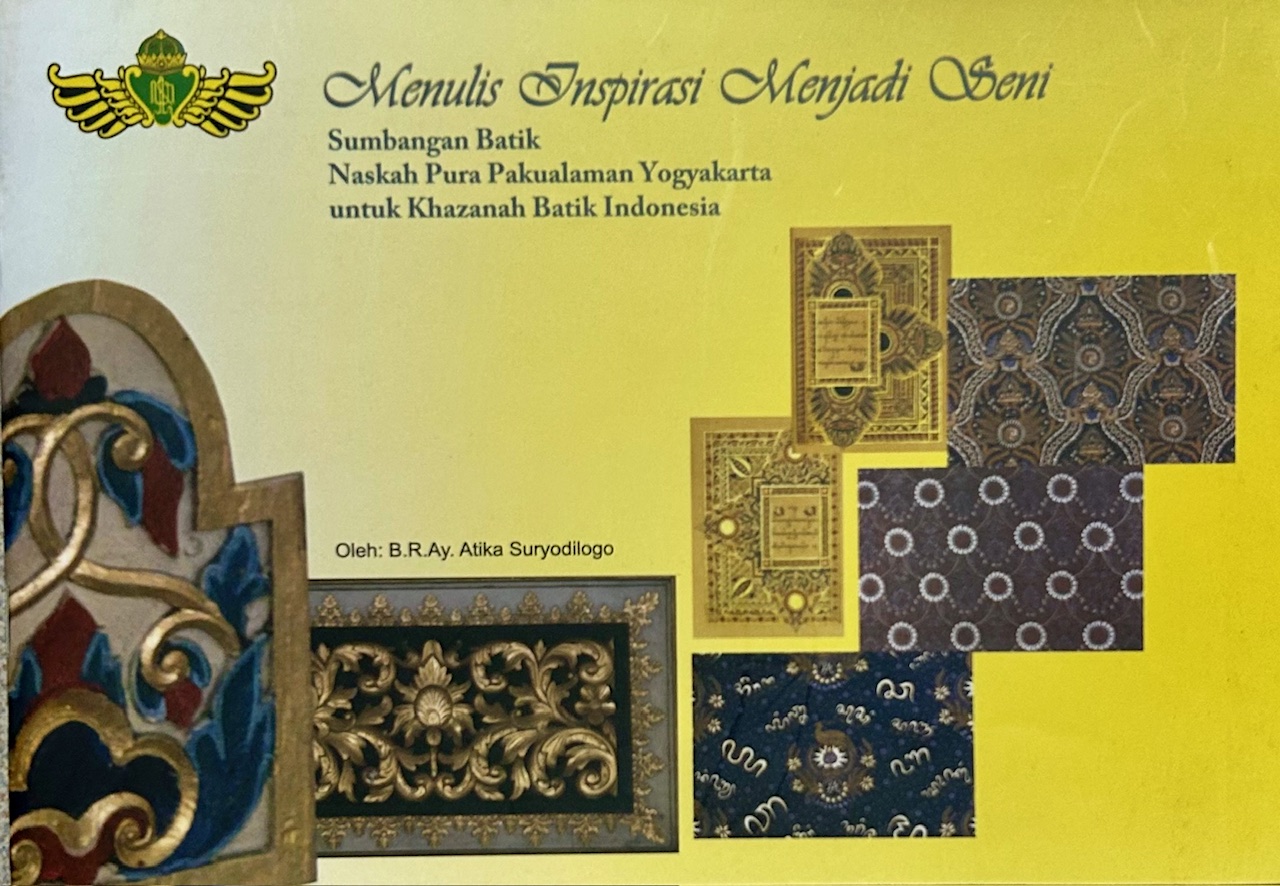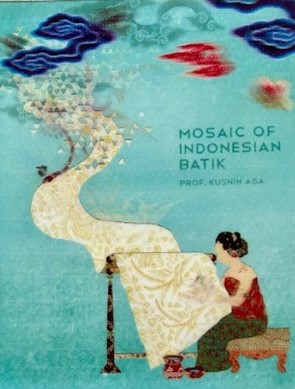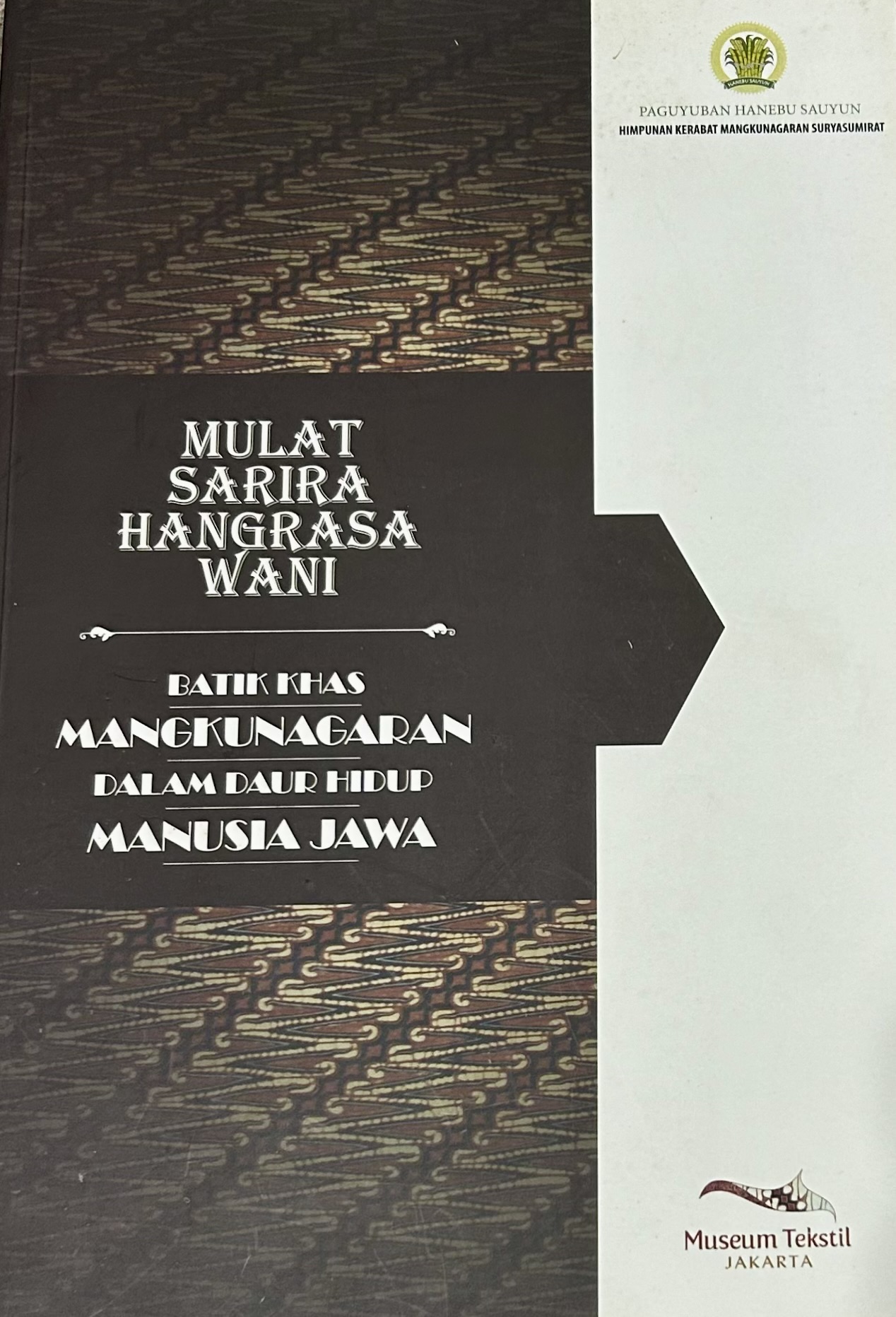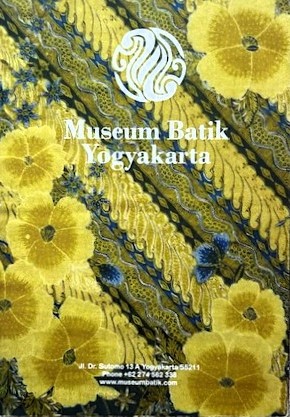

Author: B.R.Ay. Atika Suryodilogo, 2013. 32pg. (Indonesian)
Publisher: Perpustakaan Puro Pakualaman Yogyakarta
This catalogue serves as the inaugural publication by BRAy Atika, showcasing her commitment to revitalizing Pakualaman batik. Drawing from the stunning illustrations found in the ancient manuscripts of Pakualaman's library, she has crafted 11 distinctive batik motifs. This catalogue not only features these motifs but also highlights the manuscripts that inspired her and articulates the philosophies behind each motif.

Author: Kusnin Asa, 2014, 216pg. (Indonesian and English)
Publisher: R & W Publishing
The author provides an overview of Indonesia's decorative arts from prehistoric times until the rise of Batik. Subsequent chapters include Mataraman batik, Coastal and Rural Batik, and contemporary regional batik.

Author: NN, approx. 2012, 77pg. (Indonesian)
Publisher: Musium Tekstil Jakarta
The Mangkunegaran lineage, one of the two royal houses in Surakarta, is dedicated to preserving and sustaining the existence and vitality of the royal court. In 2012, the Mangkunegaran Suryasumirat community successfully collaborated with the Jakarta Textile Museum to organize a significant exhibition that highlighted batiks used in lifecycle ceremonies. The exhibition catalogue showcases batiks utilized in essential rites of passage, including those for birth, adolescence, marriage, the seven-month pregnancy ceremony (mitoni), and death. The catalogue concludes with an exhibition of batik pieces from the collections of various descendants of Mangkunegaran.

Author: 2012.12 pg. (English and Indonesian)
Publisher: Batik Inc. Yogyakarta
The catalogue presents the history of the museum, which in 2022 sadly has closed its doors following bankruptcy and the pandemic, after the third generation of Indo-Chinese batikers.

Author: Team of curators, 2012. 234pg. (English)
Publisher: Department of Museums. Malaysia
From 1960 to 1990, Malaysian batik experienced significant growth, with wax-stamped designs becoming very popular and featuring diverse motifs and colors. The traditional batik sarong transformed into yardage for tailored clothing, and new materials were introduced for wax stamping and freehand drawing.
Page 19 of 37